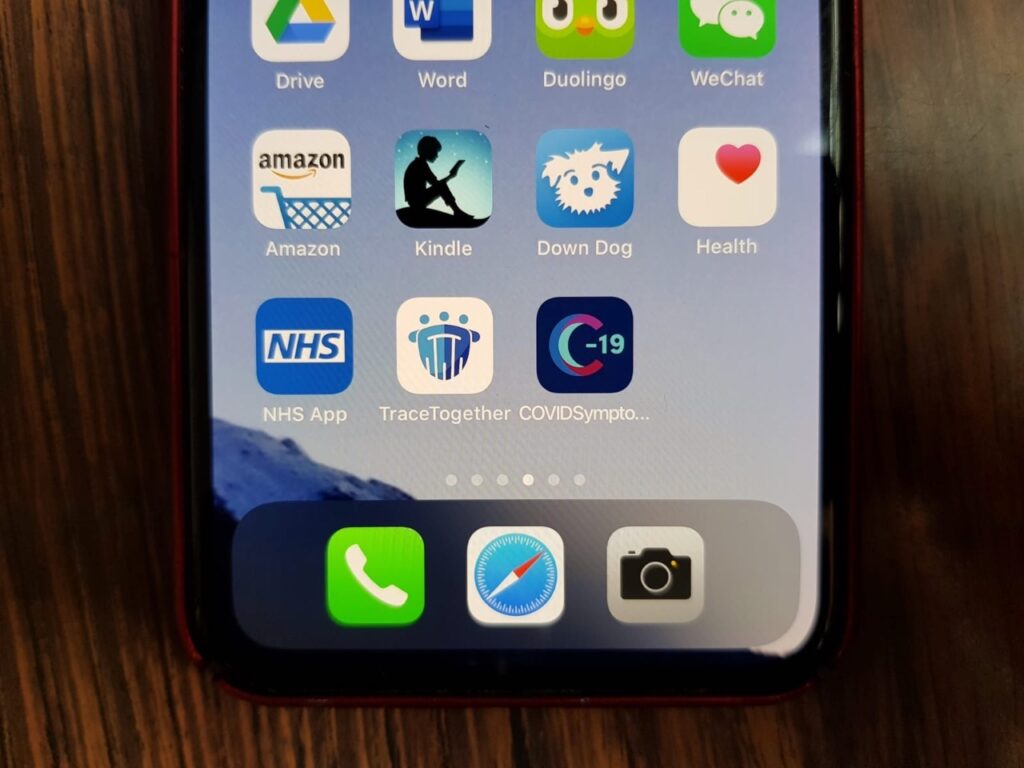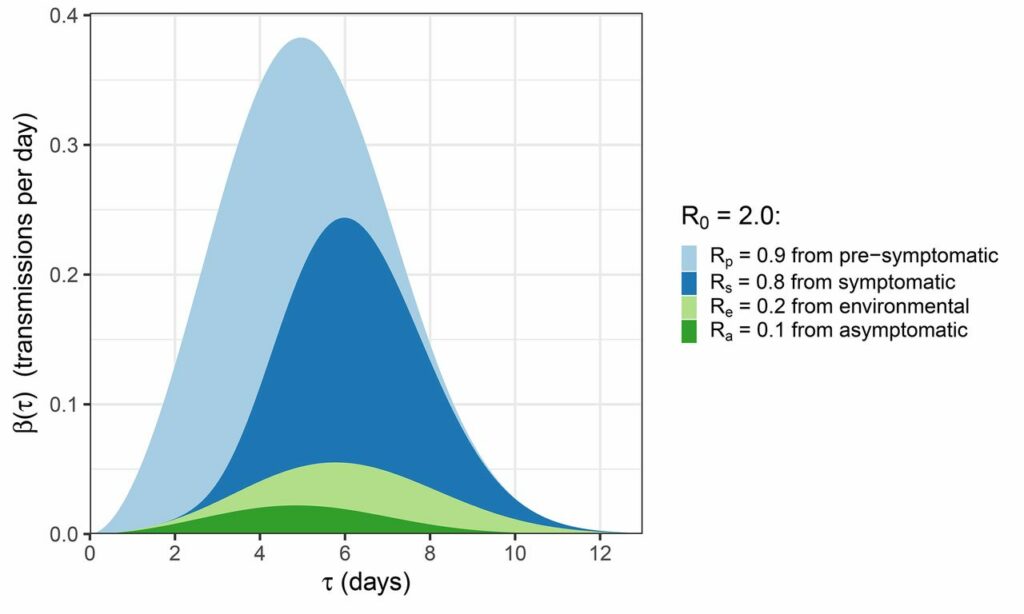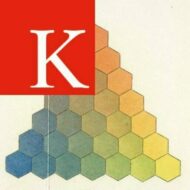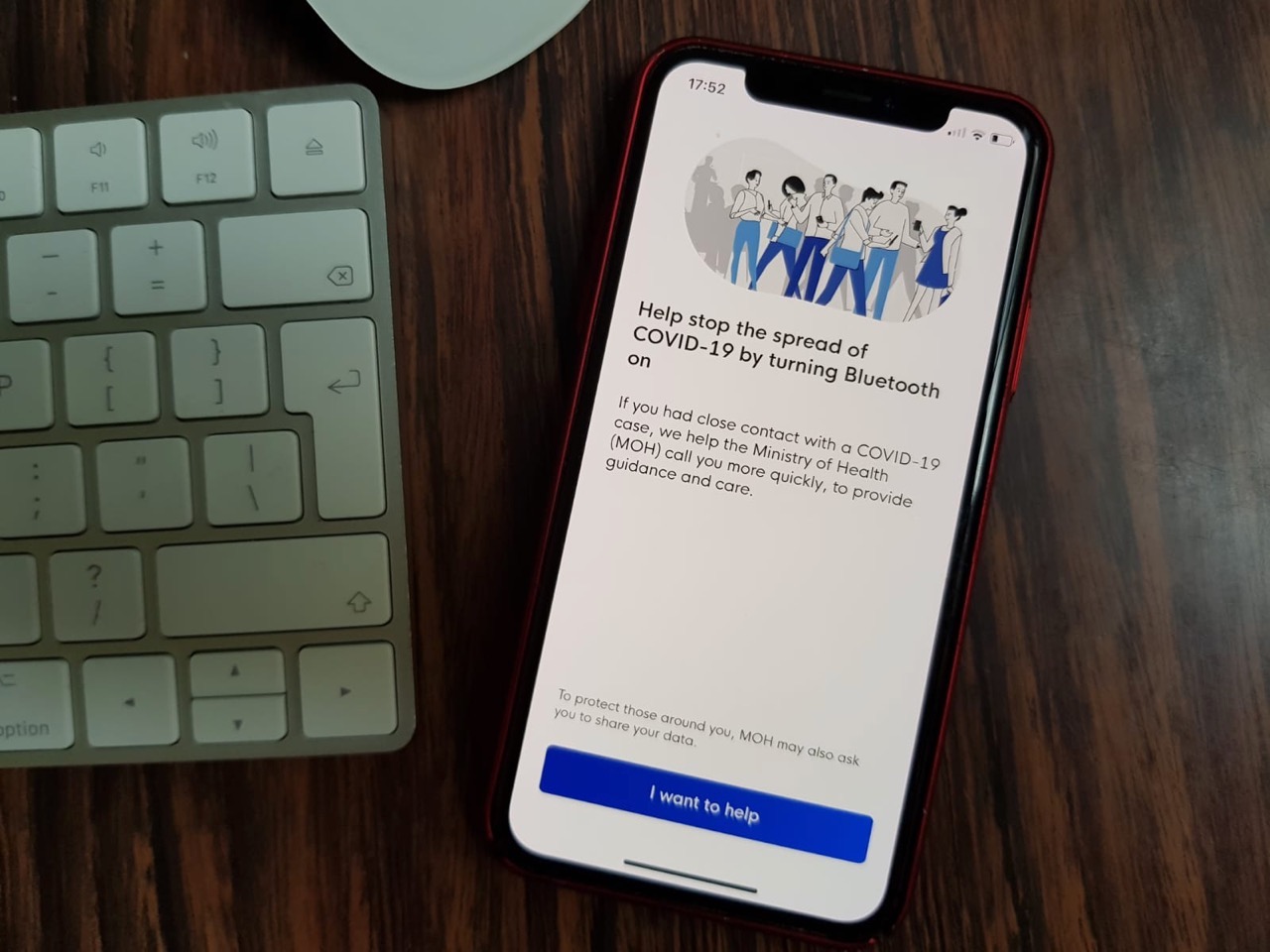‘Media show up wherever we humans face the unmanageable mortality of our material existence,’ wrote the philosopher John Peters Durham five years ago not knowing that the Coronavirus Covid-19 would prove him right. Already at the beginning of February there was an app for assisting us in managing our mortality better, and as it usually is with apps, soon there were too many of them to keep track.
There were apps that tracked your symptoms. Apps that calculated the likeliness of you having Covid-19 out of thin air. Apps that informed you about the coronavirus spread in your area crunching recent data. And apps that warned you rightly or wrongly about having come in contact with a carrier of Covid-19. All over the world governments were looking into how to best track the infections of their citizens. Thanks to COVID-19, surveillance seemed to have become acceptable. Even the EU, so far the leading in the fight for privacy and data protection, adapted to this tune. Its GDPR law had set a new standard influencing the handling of data worldwide. That was then. Now its European Data Protection Supervisor stated that Covid-19 is a moment in which ‘you realise the world has changed’. And the apps on our smartphones were the game changer.
Covid-19? There is an app for it
Smartphone applications seemed predestined for those many different sides of the invisible worldwide enemy No.1, Covid-19. Apps often solve rather particular, singular tasks. This aspect has been ridiculed in the meme ‘there is an app for it’ and has led academics studying digital technology to describe apps as ‘mundane software’ (Morris & Murray 2018). Mundane, as apps assist us in everyday life with banal tasks and ‘little nothings’ – nothings that seem insignificant only as long as they are not linked together. Now that even insignificant contacts can become a threat, the hope of curbing the pandemic lies on those little nothings. At least for some. Others fear a further normalisation of surveillance.
There are reasonable fears of an intensification of surveillance: we know that measures to fight a disease are deeply linked to political ideologies, described for example in Richard Evan’s study Death in Hamburg: Society and Politics in the Cholera Years 1830-1910 (brilliantly summarised by Alex de Waal here) and more prominently in Michael Foucault’s Discipline and Punish. Foucault showed how the chaos of the plague, ‘at once real and imaginary’ is met by order: by issuing regulations, by confining the population to quarantine leading to the ideology of a disciplined society. Before that, the measures to fight another disease, leprosy, resulted in excluding the infected by marking them through special clothing, ringing bells to warn others that they were close, or in exiling the potentially sick in an asylum leading to the ideology of a pure community. In the fight against Covid-19, those older measures returned: ‘lockdown’ and ‘social distancing’ are modern version of the quarantine, while the closing of national borders, which promptly fuelled racist incidents, echoes the wrong idea of a ‘pure community’. But there is also a new and original element to this crisis drawing on the technological society we have become: a digital track-and-trace of the virus typical for the society we live in, the ‘society of control’, as Foucault’s friend and colleague Deleuze put it. It is enabled by the devices that rarely leave our sides allowing ‘continuous control’ and ‘instant communication’: our smartphones.

Every 12min of our waking day
Indeed, the infrastructure for such a measure to curb the new pandemic via our smartphones is well in place providing reason for both hopes and fears of tackling Covid-19. The device has been widely adopted: nearly 80% of people living in the UK own a smartphone. It is also the device people say they would miss the most, according to an Ofcom report, which also found that on average people in the UK check their smartphones every 12 minutes of the waking day. This strong bond with our smartphones, in the past mostly looked upon as an ‘addiction’ now seems to be an advantage when it comes to tackling COVID-19. With a few technical tweaks, apps could continuously as well as instantly deliver tailored communication to smartphone owners; such as the news that we have come in contact with a carrier of the virus or are getting close to a location where a carrier has just been.
The fear that COVID-19 accelerates the existing normalisation of surveillance and data capture even more is not just scaremongering – it is real. Emergency legislations introduced to manage the crisis often include the widening of possible surveillance as it did in the UK. When the government was summarising the impact of its own legislation, it acknowledged that this ‘could lead to increased interference with citizens’ Article 8 rights to privacy’. Still, the legislation will not be reviewed before two years. The crisis also allows technology companies to scale up their techniques of capturing data, now for a good cause. Can surveillance be justified? Whatever happened to surveillance? Given the worldwide quarantine we humans find ourselves in, afraid of a virus and without a vaccine, tech solutions are being looked upon as a possible solution. They are also being embraced and implemented without the usual scrutiny. The NHS announced to work with US tech companies such as Palantir, Microsoft, and Amazon to process data and inform the COVID-19 response. This has been met by strong criticism from digital rights groups and critical tech experts (1, 2). At the same time, studies by epidemiologist which calculate models to understand the transmission of the virus in better detail came to the conclusion that certain forms of surveillance might be the only measure to contain the disease.
Pre-symptomatic individuals spread half the transmissions
The viral spreading of Covid-19 is different from other viral infections. Studies (1, 2) published in Nature and Science Magazine show that the virus starts spreading before an individual is experiencing symptoms, meaning that individuals are infecting others while not being themselves aware of it. Between a third and a half of transmissions occur from pre-symptomatic individuals, conclude scientists of the University of Oxford who quantified Covid-19 transmissions. The mathematical model developed for the study showed that the contribution from pre-symptomatic individuals was ‘almost enough to sustain an epidemic on its own’. In other words, the epidemic cannot be contained by solely isolating symptomatic individuals, because transmissions by pre-symptomatic individuals are too high.

(Source: Ferretti et. al. 2020)
Informing a potentially infected, pre-symptomatic individual earlier of having been in contact with a carrier would allow that still pre-symptomatic individual to enter self-quarantine, thereby reducing the spread of the virus. Epidemiologists such as the Director of Berlin’s Institute of Virology, Christian Drosten, believe those studies are right. In his weekly podcast, he considered that apps assisting with contact tracing could be helpful to achieve a sustained epidemic suppression bringing down the level of transmission R < 1. Others simply hope that digital contact tracing will allow to contain a second wave once testing is more widely available; for this at least 60% need to welcome the new surveillance by downloading and using such an app, early studies said. Even less uptake of such an app would minimise the spread. From that perspective, there is good reason to embrace surveillance, if we manage to get the issue of privacy right.
In mid-April, a team of European academics and privacy experts including a lecturer in digital rights from UCL, Michael Veale, launched an open protocol for such an app that would technically maximise privacy. The decentralised ‘DP3T’ uses our phones’ Bluetooth, a standard based on wireless radio wave transmissions used for exchanging data over short distances. So called technical ‘handshakes’ in-between devices could be used to create a list of other phones we came near to. The team’s approach was maximised the preserving of privacy: When using the DP3T protocol, a phone will send out ephemeral identifiers in a handshake and receive others from those who have the same app. An infection, once confirmed by the health authority, will only be communicated with the consent of the patient. Then, all the identifiers sent out by the infected patient’s phone and received by other phones will be collected and uploaded to a server used to regularly inform all app users of identifiers linked to an infection. Due to the fact that the phone checks locally if it ever has received such an identifier linked to an infection, the central server will never be able to learn whom anyone came in contact with. The server is therefore not able to centrally surveil the participants of such an app as the checking is done in a decentral manner.
Google and Apple – the good guys?
Governments, democratic or not, were not pleased. For a range of reasons – to monitor the spread of the virus more closely, to collect medical data, or simply to spy on the movement of its citizens – they preferred a central server that provided them with more granular data and therefore more control. When the decentral DP3T was launched, European governments had just embraced a protocol called PEPP-PT build around a central server, which would operate similar to Singapore’s early launched TraceTogether app. But in our technical realities, the sovereign power of governments does only reach so far. Soon there were bigger players standing in their way: Apple and Google. The companies favoured a more decentralised approach afraid of damaging their reputation, because centralised contact tracing is providing governments with the technical means to spy on their citizens by delivering a comprehensive social graph, a graph that shows with whom one was in contact with. In some countries, for opponents of a regime the existence of such a social graph could be fatal. Ruling over the operating systems of users’ devices, Apple and Google decided: no. Soon they were challenged by European governments such as France to be made an exception.
To understand the technology companies’ power, it is again necessary to look again into their technical realm even though at this point it might seem to some that the discussion evolving around Coronavirus apps resembles an Ottolenghi recipe: the list of technical ingredients you need to familiarise yourself with from data privacy on servers to Bluetooth to operating systems is endlessly long, and there are always some things you have not heard of. But as with the outcome of Ottolenghi recipes, it is worth bearing with it. Google and Apple cover 99% of the world’s smartphones operating systems, and can therefore make nearly sovereign decisions as to how they use a Bluetooth signal. To avoid the drainage of a phone’s battery, their mobile operating systems only allow the usage of the Bluetooth signal when an app is active and in use. When we use our phones for other purposes, for example when we are checking our email, sending a text message, or when locking our screens by putting our phones in stand-by, the Bluetooth sensor is usually shut down. No signalling, no receiving of signals – in short, no Bluetooth handshake. As this is profoundly hinderance for contract tracing, Google and Apple decided to allow constant activity of Bluetooth but only if an app is operating in a decentralised mode: ‘Proximity identifiers’, they announced in their white paper, ‘obtained from other devices are processed exclusively on device.’ No central tracking, no potential for any government to spy on how our social graph is build and if we associate with the right people. The insignificant little nothings we collect via Bluetooth handshakes can only become significant for us. Problem solved. Or so it seems, unless we look at little further

How apps interfere and implement social situations
Unfortunately, maximising privacy is not the only significant aspect when developing an app. Good ingredients are important, and in technical thinking good ingredients mean: transparency, security and privacy. But as one can learn from Ottolenghi: having the right ingredients does not automatically guarantee we also manage to cook a good meal. As important as the ingredients is how we treat those ingredients. While privacy and data security are of central concern, the aspect that is equally important is the social situation produced and implemented through those ingredients. Given the fact that the handling of data has become omnipresent, surveillance scholars such as Jef Huysmans started to ask questions beyond privacy; Huysmans explored what ‘democratic practice’ could mean in a surveillance situation. When analysing examples of surveillance in light of that question, the social quickly came into view as something politically significant – as it is with contact tracing apps.
To understand how apps are shaping social situations and with it lives, it is essential to understand once more the nitty gritty details of the technical ingredient ‘Bluetooth’. Its low energy signal used for contact tracing has an average range of 10 meters. Detecting other phones, i.e. potentially infected individuals, depends on signal strength, which roughly indicates how far away one is from one another. But Bluetooth’s received signal strength indicator, as engineers working with it know, is unreliable. For one, the signal strength varies profoundly in between phone models. Also, the signal strength changes with the positioning of the phone; for example, individuals separated from another by a drywall or sitting in opposite levels of a double-decker bus will most likely exchange a Bluetooth handshake while it is impossible to become infected. In other words, there is plenty of room for what is in medical statistics called ‘false positives’, and this is where the politics of social situation become relevant.
False positives hurt some more than others
The effect of receiving a false positive is not the same for everyone. False positives are more acceptable in some jobs than in others, or in other words: some will suffer more from false positives than others. Essential workers such as nurses, supermarket cashiers, or those working in delivery services would often be asked to take a pay cut and live on the Statuary Sick Pay of £95.85 per week. Gig economy or zero contract hour workers are even off worse and would receive no pay. Middle-class jobs, on the other hand, are often linked to people that work in an office. False positives do not matter much if you can work from home. For most middle-class office jobs, there is no financial losses involved.
Should we therefore abolish contact tracing apps? Oxford’s Professor of Information Ethics Luciano Floridi has considered that argument: ‘In plain English: if it turns out that one cannot build it rightly, perhaps one should not build it at all in the first place.’ But thinking this through, he moves on to argue that ‘a good app must be part of a wider strategy’. This would be the hardest part: research shows that in the Western world, there is a clear tendency to hail technology as a full-automatic solution instead of something that that automatizes one task thereby also creating new problems. The recent hype around Artificial Intelligence in healthcare demonstrated that splendidly, where algorithms were pitched against doctors – ‘as good as a doctor’. For contact tracing, this does not work, and not only because such an app has the tendency to fortify worsen already existing social differences leaving those in financially weaker situations worse off. An app would also be helpless in balancing suspicion with care.
There is a lot that can go wrong when communicating a serious infection via an app. Exactly this is why Singapore, one of the few countries that had gained early on experience developing their contact tracing app TraceTogether warned that an app should not be treated as a coronavirus panacea: ‘A human-out-of-the-loop system will certainly yield better results than having no system at all’, TraceTogether’s product lead Jason Bay clarified in an online post. ‘The experience of Singapore’s contact tracers suggest that contact tracing should remain a human-fronted process. Contact tracing involves an intensive sequence of difficult and anxiety-laden conversations, and it is the role of a contact tracer to explain how a close contact might have been exposed — while respecting patient privacy — and provide assurance and guidance on next steps.’
While an app can deliver the suspicion needed to cut down the spreading of the virus, it cannot deliver the thing we need most when it comes to manage our unmanageable mortality, and that is: care.
This text owes many ideas and insights to Claudia Aradau (KCL), Tobias Blanke (UvA), Felix Stalder (zhdk), and Jef Huysmans’ (QMUL) text on ‘Democractic curiosity in times of surveillance’.

